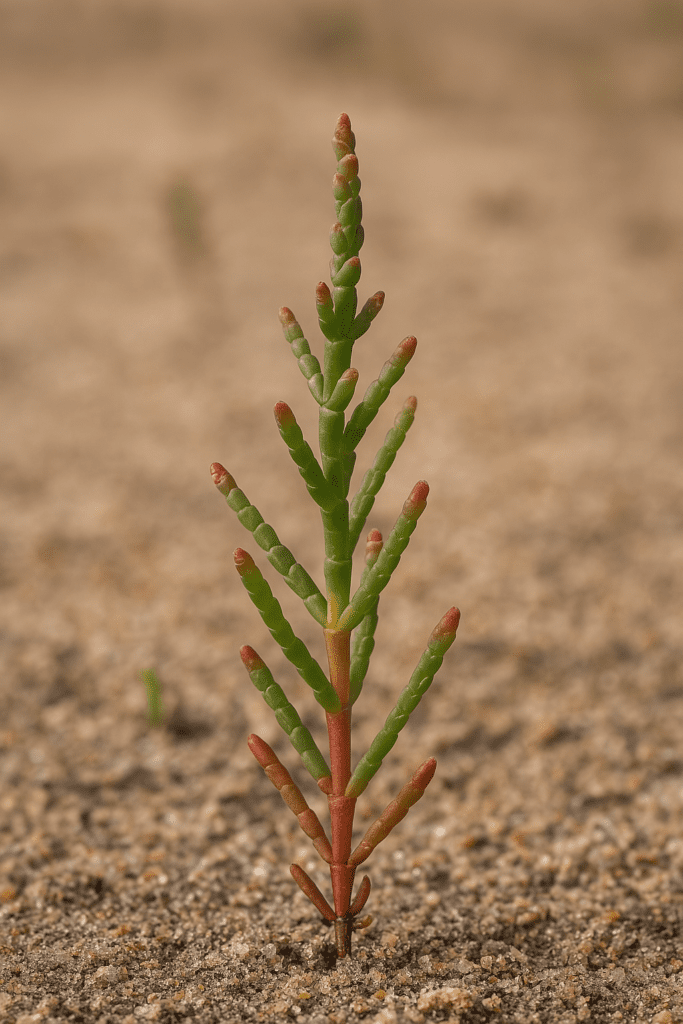What does it mean for soil to be saline?
Imagine watering your plants, and afterwards, you notice a whitish residue on the soil, as if someone had sprinkled salt over it. This is because there really is salt in the soil. We refer to soils with a high concentration of dissolved salts as saline soils. This can happen for various reasons, such as using saline irrigation water, intrusion of saline water, or simply because the location naturally has high salt content. This is more common in areas with low rainfall and high heat, as the water evaporates but the salts remain.
Why is soil salinity a problem for plants?
The presence of high salt levels in the soil can be problematic because it makes it difficult for plants to absorb water and nutrients properly. This weakens them, interferes with their growth, and in severe cases, can even kill them. Plants in saline soils often appear wilted, have burnt tips on their leaves, and show stunted growth.
Plants that indicate saline soils
Some plants can not only tolerate salinity but also signal that a soil is saline. Here are a few of them:

- Salicornia: Also known as glasswort or sea asparagus (Salicornia europaea), this succulent green plant is typical of coastal and saline zones.
- Atriplex: Known as saltbush, these plants can thrive in highly saline soils and are often used to rehabilitate degraded lands.
- Suaeda: Often called sea blite (Suaeda maritima), this is another plant that adapts well to saline conditions and helps indicate their presence.
- Juncus: These reeds are commonly found in brackish areas and are good indicators of salinity (Juncus acutus).
Additionally, utilising plants with arbuscular mycorrhizal fungi, a type of fungus that forms symbiotic relationships with plant roots, can be an effective strategy to enhance plant growth in these challenging soils.
Tips for managing saline soils

- Early identification: Learning to recognise plants that indicate salinity can help you take action before the problem seriously affects your crops.
- Improving drainage: Ensuring that your soil has good drainage can help wash away salts.
- Using amendments: Materials like gypsum can help displace salts and improve soil structure.
Conclusion
Recognizing and understanding saline soils is crucial for any farmer or land manager. By observing which types of plants are growing in your fields and how they respond, you can gain valuable insights into the health of your soil and take steps to improve its quality and the productivity of your crops. This guide is not only a starting point for better managing saline soils but also a way to promote more sustainable and effective agricultural practices.
